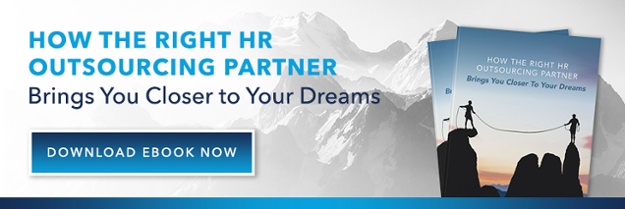Topic Business Performance,
Restore the Roar: Finding Momentum After COVID-19

June 30, 2020 | By Questco

There's no way to know when or if things will ever return to the way they were before the outbreak of the pandemic. For example, the retail grocery industry may have seen a permanent shift towards delivery and "click and collect" services. Some 40% of Americans who placed delivery orders during the week ending March 13th were first-time adopters.
Many pragmatic leaders recognize the immutability of change and are willing to adapt accordingly. They understand the need to remain proactive in strengthening their company's market share, even as they face the possibility of operating under the "new normal" square on.
The following information discusses 4 key ways that leaders can improve business and build for the future.
Take Advantage of High Unemployment
In April 2020, the U. S. unemployment rate exploded to 14.7%, largely as a result of efforts to limit the spread of COVID-19. This is the highest unemployment rate the country has seen since the 1930's. At the same time, this statistic demonstrates the enormous size of the available talent pool across many industries.
While many businesses intend to hire back their workers at some point as restrictions are lifted, now is the perfect time for competitors to steal away high performing workers that are still unemployed.
Skill shortage remains a major concern for many corporate leaders. A survey from The Economist showed that four-fifths of CEOs worry about skill shortages. At the same time, large global search firms saw a 9-15% increase in business in 2019. Now, with the talent pool larger than ever, companies have the opportunity to identify foundational talent and bring these high performers on board in preparation for future growth.
This requires proactive effort on the part of progressive organizations. It's simply not enough to passively wait for candidates to come to you; instead, you must develop an active recruitment strategy tailored to your specific business objectives, and then vigorously follow through on that strategy. At the same time, your hiring process must be agile enough to adapt to the changing market, and your changing needs.
Adjust Marketing Strategy
The needs, wants, concerns, and goals of your target audience have likely changed significantly over the past several months. It's vital that you pinpoint any changes in this core demographic, such as the latest pain points associated with the so-called "new normal."
Many companies have used surveys and focused interviews to gain insights into the changing needs and expectations of target consumers. These market research tactics can guide you in making strategic changes, and help you take advantage of the current environment. In addition, social listening is another feedback channel that some organizations have leveraged to great success.
Redefine Engagement
COVID-19 has radically altered the way we engage with one another. In-person visits, once the preferred medium of communication for many interactions, have now been relegated to an inferior status compared to virtual meetings and other channels.
In this regard, too, it is vital for companies to acknowledge and adjust to the expectations of their customers. Engage with your consumers on their terms, even if that means stepping outside of your comfort zone by ramping up your social media presence, doubling down on email, or utilizing video conferencing technology. Many consumers dealing with "cabin fever" from the isolation have signed up for interactive webinars or joined branded Zoom meetings as a result of an emailed invitation.
Streamline Processes
Finally, many businesses have taken advantage of this lull in the marketplace to audit their processes and make adjustments to their workflow, infrastructure, or other operational components. In effect, they've pressed the "reset button" on certain processes that were not yielding optimal performance in order to streamline and consolidate them for future growth.
In this regard, now is an excellent time to seek outside assistance. Just as one example, think of the potential inefficiencies and costs in time and money from keeping all HR-related administrative tasks "in-house." For companies that attempt to juggle oversight of payroll, worker's compensation, unemployment insurance, health insurance, and other benefits, the specters of human error, distraction from core competencies, and operational bottlenecks are always looming.
While a business owner may try to perform all of these necessary tasks in-house, outsourcing at least a few of these items to a 3rd party vendor, such as a PEO company, can relieve you from the heavy administrative burden of going it alone. In the long run, you may find that such a partnership yields higher cost savings than a 100% in-house solution.
How to "Restore the Roar"
Even though your company may be going through a period of relative quiet, there still exists an opportunity to "restore the roar" in your marketing efforts and your core operations. In summary, the 4 critical areas you should examine in this regard are:
- Your hiring/recruitment strategy.
- Your marketing strategy.
- Your engagement efforts.
- Your processes.
In addition, remember that impactful engagement goes beyond merely talking to prospects. It also involves engaging your own employees, and acting upon feedback received from them. To learn more about this aspect of HR management, download our eBook: "6 Modern HR Strategies and Trends to Improve Employee Engagement (And 5 to Leave Behind)."



